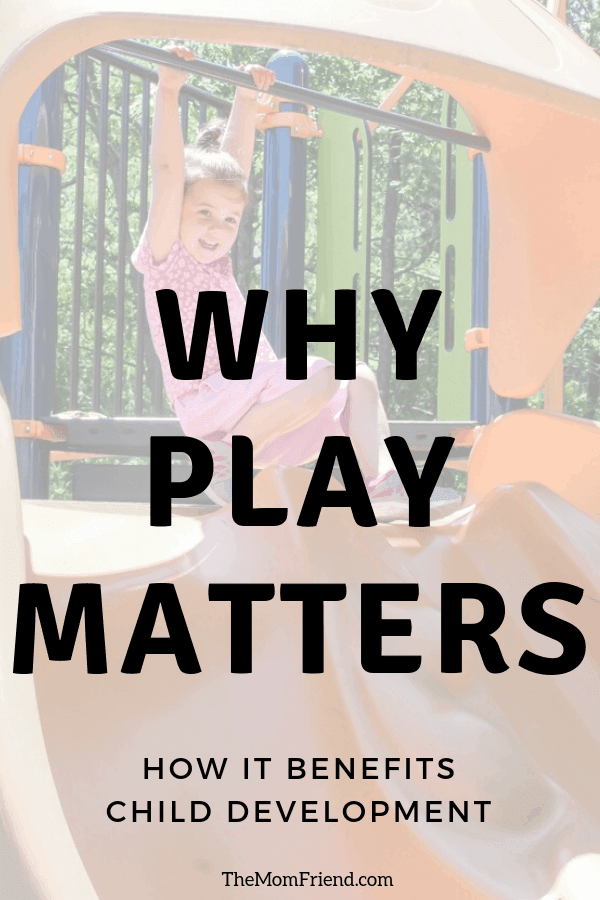This post was sponsored by Landscape Structures as part of an Influencer Activation for Influence Central and all opinions expressed in my post are my own.
We all know play is fun, but have you ever stopped to really think about the importance of play for a child?
As a mom, I know that play is important to the overall happiness and well-being of my children. As an Adapted Physical Education Teacher, I know that play is essential for the development of skills—including gross motor, social and play skills, and critical thinking/problem-solving abilities.
It is also really fun! Both watching my kids play and engaging with them are some of my most favorite memories.
Related: Best Board Games for Preschoolers
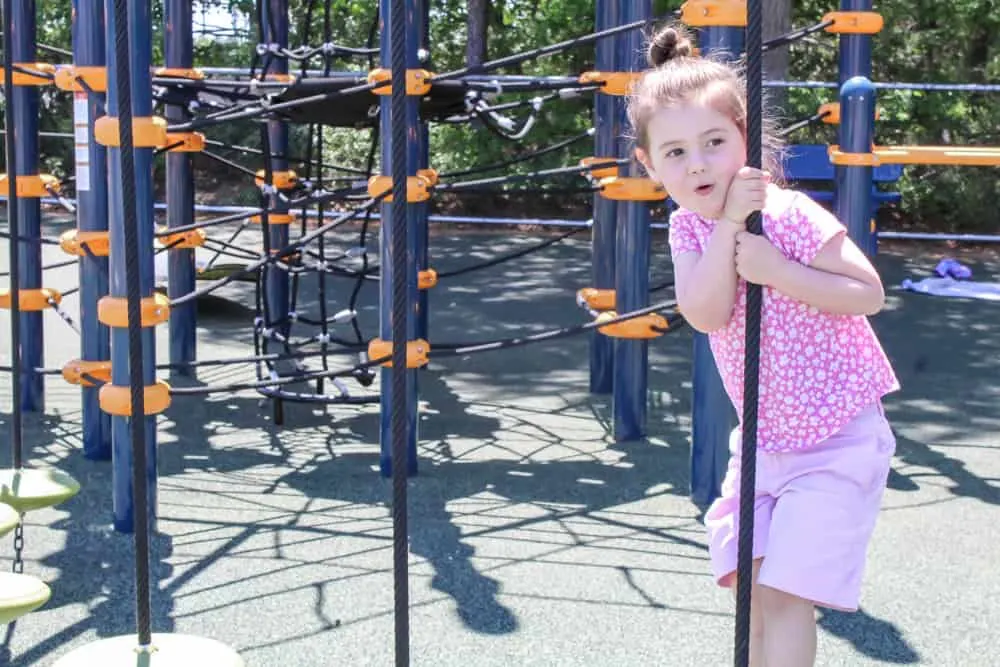
Since physical and overall skill development is a huge part of my job as a teacher, I can fairly easily see the benefits of simple play activities. However it may not be as clear to some other parents, so today I wanted to focus on why play is important and some fun ways you can encourage play for your children (plus ways to get in on the fun at a playground too).
Why Play is Important
Ever wonder how children learn? As a teacher, I’ll be the first one to admit that real learning—the type that shapes who we are as individuals—does not just happen in the classroom.
Children learn through experiences, through taking risks and pushing boundaries. They learn by interacting with other children, navigating conflicts and by being creative.
They learn through PLAY!
The opportunity to run and play freely—without any instruction or guidance—is something all kids should have the chance to experience. Not only does it help them develop creativity and confidence, but it also develops problem-solving and critical thinking skills when left to their own devices.
Related: Sensory Play for Babies & Toddlers
Play has been proven—time and time again—to have a major impact on the cognitive, social, emotional and physical development of a child. It promotes healthy brain development and even contributes to academic learning. It is the greatest teaching tool we as parents possess!
Socially, children begin playing independently, and then engage in parallel play (playing next to but not necessarily with) another child, before engaging in play with one another. They then learn essential skills through play interactions—including taking turns, reading cues from others, cooperation and teamwork.
Emotionally they develop perseverance, learn to accept defeat, build character and confidence and develop empathy when playing as well.
The physical motion of maneuvering around while playing helps the brain and body make essential connections that enhance balance, provide necessary sensory input, improve cardiovascular and muscular strength and endurance, develops coordination, and so much more. Not to mention the gross motor skill development—namely locomotor and object control skills that are learned through play!
Suffice it to say—play matters!
Playing at the Playground
There are so many ways to play, but today I’m focusing just on the benefits of playgrounds.
Playgrounds are perfect for open creative play and self-discovery. Children are in a safe, often secure location, with a variety of different pieces of equipment that can be used as is, or as part of larger imaginative play experiences.
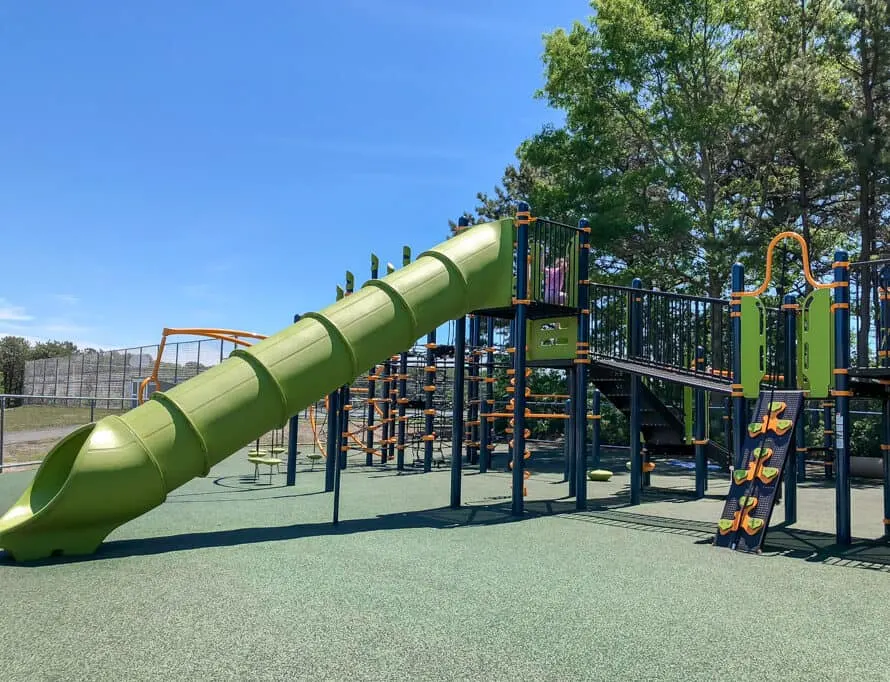
Of course, not all playgrounds are created equal. It is important to find one that will spark your child’s creativity, challenge them to try new things, and provide an inclusive experience for children with special needs.
We have a bunch of great playgrounds around us that were designed by Landscape Structures—they create innovative playgrounds that are fun for kids of all ability levels, and provide some really engaging components.
I love that they are committed to creating playgrounds that offer communities a place for everyone to play.
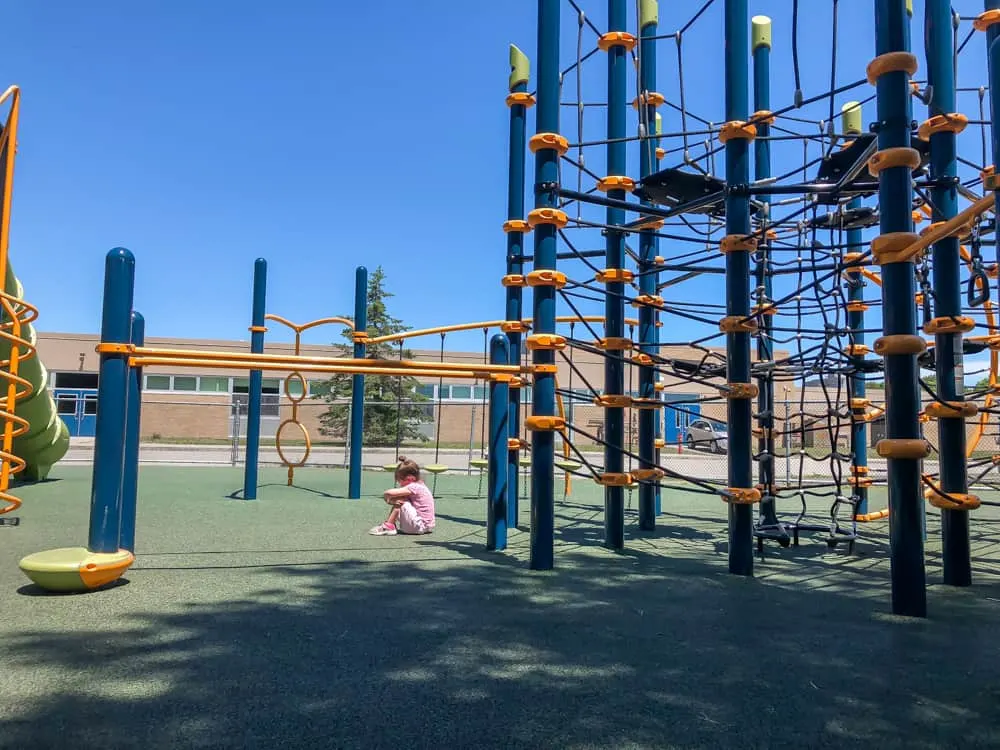
P.S.—You can find Landscape Structures playgrounds by searching here—you might be surprised at how easy it is to find one near you!
I love taking Charlie to new playgrounds to see how she reacts and overcomes her uncertainty. She put so much effort into tackling the suspended stepping stones when we tried a new-to-us playground this week but was less confident about the giant spider web. It was great to have her accomplish things and then watch her later push herself to do more!
A great playground can make all the difference, but its really about understanding what drives children’s excitement for play, and how it can impact their lives. And as a teacher in Special Education, I am always appreciative of companies that design keeping my students’ needs and abilities in mind!
Check out this great video for more!
LOVE THIS!
Playing with Kids at a Playground—what to do if they need a little encouragement
Often, children like for mom and dad to play with them at the playground. Charlie definitely does, and I love playing with her too (of course there are plenty of times I want to sit and rest too though!)
While we should be encouraging independent play as it helps kids flex their creativity muscle, intentionally engaging in playtime while at a playground is a great way to bond with little ones as well.
Preschoolers may not always understand that adults may not be able to access equipment the same way, and sometimes it can be a challenge for parents to think about how they can effectively play with their kids at the playground.
Here is a list of some fun ways the entire family can get involved to help children develop gross motor and play skills, as well as increase their confidence using the equipment, interacting with other children, and stretching their imagination.
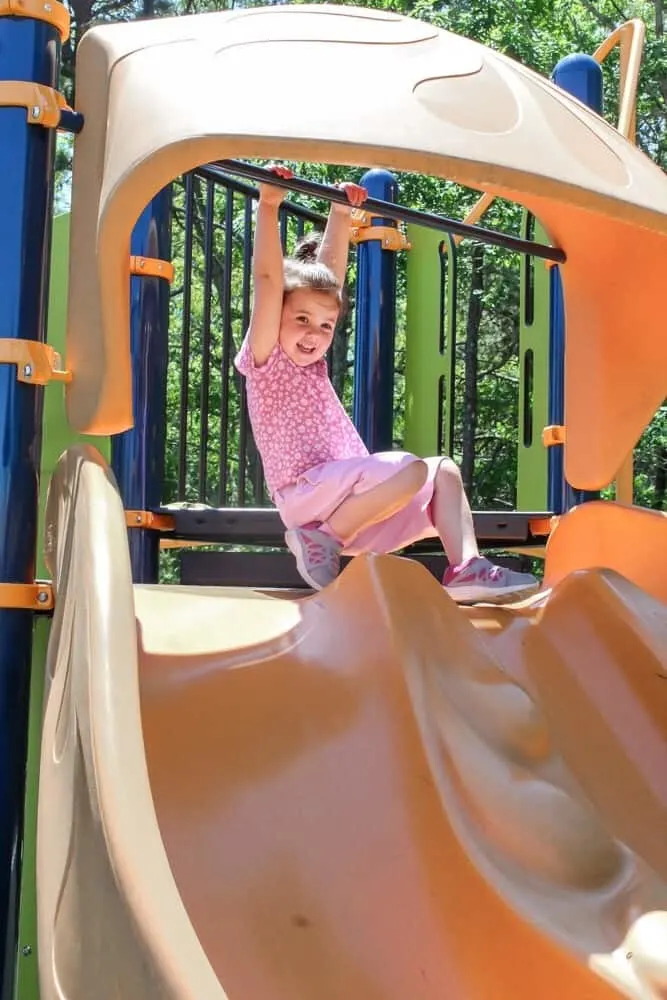
Ideas on how to play with your child at the playground
- Play Hide & Seek
Toddlers and preschoolers especially love the thrill of a chase, and hide & seek is the perfect way to help them explore a playground and see it in a new way.
Can they hide under something they have been playing on? How far can they climb before you count to 20? Hide & Seek is fun for everyone!
- Hot Lava
Fun in both living rooms and playgrounds alike, pretend the ground is hot lava and they have to figure out how to maneuver and manipulate their body to avoid falling in.
Parents can offer suggestions when children get stuck, or can even join in!
- I SPY
We play I SPY in the car all the time, but a playground is a great place too! Instead of just pointing to an object, have your children run, climb, or race to see who can reach something of that color first.
- “Play” using Locomotor Movements & Spatial Awareness
Can your child skip, hop, roll, or gallop to the slide? Call out different movements and make the journey to the stairs or another part of the play structure fun.
With so many things to climb up, down, over, under, on top of—playgrounds are great for developing spatial awareness and understanding of concepts such a physical placement.
Spatial awareness is the understanding of one’s body in relation to its environment and objects or others in the surrounding space. It is what helps people learn to navigate obstacles, avoid running into each other or things while playing or living our everyday lives, and make sense of the environment around them.
Having fun with placement is easy at a playground. We crawled UNDER the ropes, OVER the suspended “surfboard”, tested our balance ON TOP OF the rolling log, and went THROUGH the tunnel slide. Even Ellie got in on the fun!
See how many ways you can describe placement while playing the next time you are at the playground.
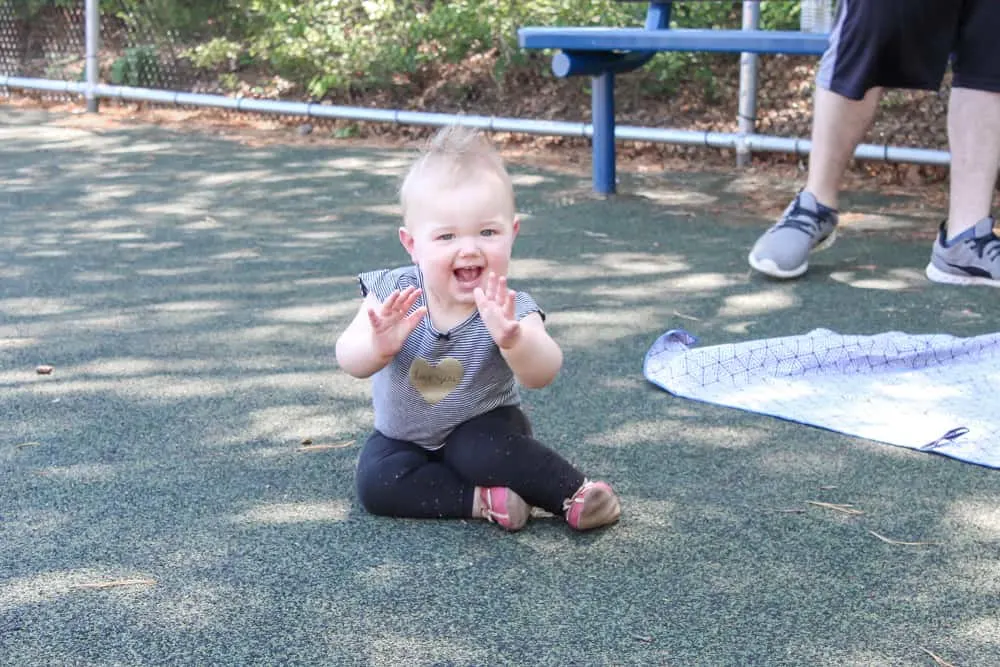
A Final Word about Play
Just because play is key to a child’s development, doesn’t mean it needs to seem overwhelming to parents. The good news is—children are intrinsically interested in play, and they are typically pretty good at teaching adults how to play if we just stop and listen or observe.
Providing opportunities for free or collaborative play—including outdoor free play at playgrounds—is a fun job, but someone’s got to do it for them, right?
When is the last time you went to a playground? Have you ever been to one of the neat ones by Landscape Structures? Did you notice any learning happening while there?
Let me know below, and be sure to share this on Facebook if you believe in the power of play!
Pin It!
